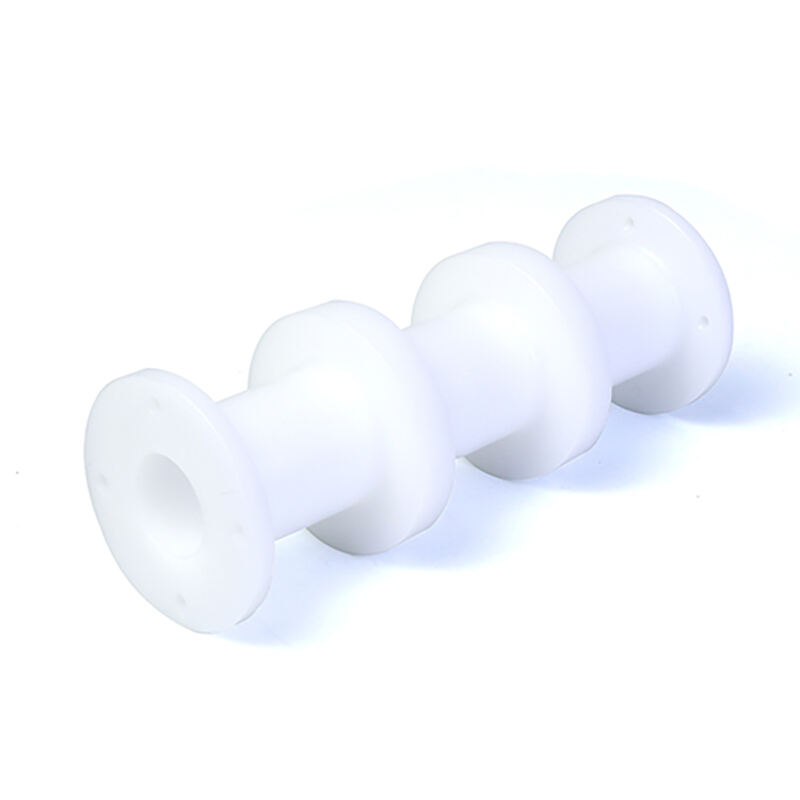Edifici 49, Parc Industrial Fumin, Vilatge de Pinghu, Districte de Longgang
Diumenge Tancat
Tipus: Brocat, PERFORACIÓ, Gravat / Maquinari Químic, Maquinari Láser, Fresat, Altres Serveis de Maquinari, Tornat, EDM per Fil, Prototipat Ràpid
Número de model: OEM
Paraula clau: Serveis de Maquinari CNC
Material: acer inoxidable alumini alloy brass metall plàstic
Mètode de processament: Fresat CNC
Temps de llavor: 7-15 dies
Qualitat: Alta Qualitat
Certificació: ISO9001:2015/ISO13485:2016
MOQ: 1 peces
Sigui honest: dissenyar una peça de plàstic per a un dispositiu mèdic és tot un altre joc. No és com dissenyar un gadget per al consumidor. Les conseqüències són més elevades, les regles més estrictes i "prou bo" no forma part del vocabulari. Està tractant amb la seguretat del pacient, regulacions estrictes i la necessitat d'una fiabilitat absoluta.
Tant si treballa en una eina quirúrgica, una carcassa per a un dispositiu de diagnòstic o un monitor de salut portable, aquest és un guia pràctica per navegar pel disseny personalitzat de peces plàstiques mèdiques proces.

Des de components d'un sol ús fins a muntatges complexos, plàstic és el material preferit per una bona raó:
• Compatibilitat amb esterilització: pot suportar cicles repetits d'autoclau (aigua calenta), radiació gamma o bany químic.
• Resistència química: resisteix desinfectants agressius i fluids corporals sense degradar-se.
• Lleugera i ergonòmica: fonamental per a eines manuals i dispositius portables utilitzats durant llargs períodes.
• Cost efectiu per a peces complexes: especialment mitjançant injecció per a grans volums.
• Opcions transparents: per a peces com cambres de fluids i carcasses transparents.
Quan dissenyes per al sector mèdic, hi ha tres factors igual de importants que la pròpia peça:
1. Biocompatibilitat: La regla número u
Això vol dir senzillament que la peça no ha de causar cap reacció negativa en contacte amb el cos del pacient. S'ha d'escollir un material certificat com a biocompatible per a l'ús previst (p. ex., contacte amb la pell, implantable). Algunes opcions habituals amb conformitat FDA inclouen:
• PVC d'ús mèdic
• Policarbonat (PC)
• Polipropilè (PP)
• PEEK (per a aplicacions implantables d'alta resistència)
• ABS
• Silicona (per a juntes i tubs)
2. Normativa i Certificacions (FDA, ISO 13485)
S'ha de poder fer un seguiment i validar tot el procés de fabricació. Això no és una suggerència; és un requisit. Necessites un soci de fabricació que estigui Certificat ISO 13485 . Això garanteix que disposen d'un Sistema de Gestió de la Qualitat (SGQ) específic per a dispositius mèdics, que abasta des de l'adquisició dels materials fins a la inspecció final.
3. Disseny per a la Fabricació (DFM) - L'arma secreta
Un disseny excel·lent a la pantalla pot ser una autèntica pesadilla de produir. Un soci fabricant et proporcionarà un informe DFM, que és bàsicament una revisió col·laborativa per:
• Suggerir ajustos de disseny per fer la peça més fàcil i barata de moldre o mecanitzar.
• Identificar punts febles potencials o riscos de fallada.
• Recomanar el millor procés de fabricació (per exemple, mecanitzat CNC per a prototips vs. injecció per a producció massiva).
Mai, mai ometre el prototipatge. Per a peces mèdiques, no es tracta només d'ajustar i funcionar—es tracta de validar tot el concepte abans d'invertir en eines costoses.
• Mecanitzat CNC: Ideal per a prototips funcionals. Es pot utilitzar el material final exacte per provar propietats mecàniques, cicles d'esterilització i muntatge.
• Impressió 3D (SLA, SLS): Excel·lent per a models inicials de forma i ajust i dispositius adaptats al pacient. Només cal assegurar-se que la resina sigui biocompatible si entrarà en contacte amb la pell.
Dissenyar peces plàstiques mèdiques personalitzades és un procés detallat i iteratiu en què la seguretat i la precisió són fonamentals. Centrant-se en biocompatibilitat, compliment normatiu i un disseny intel·ligent per a la fabricació des del començament, es poden evitar retards costosos i crear un dispositiu que no només sigui eficaç, sinó també segur i fiable.



P: Quant de pressa puc rebre un prototip CNC?
R: Els temps d'entrega varien segons la complexitat de la peça, la disponibilitat del material i els requisits d'acabat, però generalment:
• Prototips senzills: 1–3 dies laborables
• Projectes complexos o amb múltiples peces: 5–10 dies laborables
El servei accelerat sovint està disponible.
P: Quins fitxers de disseny necessito proporcionar?
R: Per començar, hauries d'enviar:
• Fitxers CAD 3D (de preferència en format STEP, IGES o STL)
• Dibuixos 2D (PDF o DWG) si es requereixen toleràncies específiques, rosques o acabats superficials
P: Podeu manejar toleràncies ajustades?
R: Sí. La mecanització CNC és ideal per assolir toleràncies ajustades, típicament dins de:
• ±0,005" (±0,127 mm) per defecte
• Toleràncies més estretes disponibles sota sol·licitud (per exemple, ±0,001" o millor)
P: És adequat el prototipatge CNC per a proves funcionals?
Sí. Els prototips CNC es fabriquen amb materials d'enginyeria reals, cosa que els fa ideals per a proves funcionals, comprovacions d'ajust i avaluacions mecàniques.
Ofereixes producció de baix volum a més dels prototips?
Sí. Molts serveis CNC ofereixen producció interina o fabricació de baix volum, ideal per a quantitats d'1 fins a diverses centenars d'unitats.
És confidencial el meu disseny?
Sí. Els serveis de prototips CNC de prestigi sempre signen Acords de Confidencialitat (NDA) i tracten els vostres fitxers i propietat intel·lectual amb total confidencialitat.
Drets d'autor © Shenzhen Perfect Precision Products Co., Ltd. Reservats tots els drets — Política de privacitat—Bloc